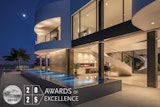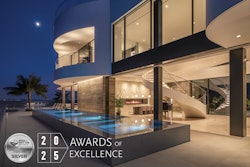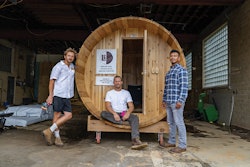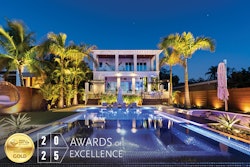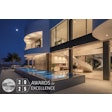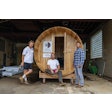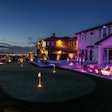By now there’s a good chance you’ve seen the October edition of AQUA, which includes the debut of AQUA Architecture, a new section of the magazine focused on design and construction.
One of the elements you’ll find in this new editorial offering is my commentary “New Designs” on page 35, a spot where I share personal perspectives based on my years of experience covering our industry and more or less set the table for the content that follows. As one who enjoys commenting upon matters of import and hopefully prompting thought, opinion and commentary from readers, I relish this opportunity to toss in my two-cents via the magazine and I sincerely thank the folks at AQUA for giving me this terrific new opportunity.
Obviously, I’ve been eager to receive feedback on this new foray into the world of aquatic creation coverage and sure enough, right out the gate, I heard from my dear friend Laurie Batter, who pointed out that in my lamenting of the industry’s lack of formal, university-level education I failed to mention a two-year A.S. program at Keiser University in Daytona Beach, Fla.
Laurie writes: “This college degree is an online degree, which was launched in 2004 and has run continuously 12 months a year. October will begin the eighth year. It has proven successful for more than 50 students. This course is accredited through the Commission on Colleges of the Southern Association of Colleges and Schools.”
She goes on to point out that the program offers classes in design and construction, which constitute one-third of the program, and other pertinent topics such as lighting and water chemistry.
And she adds: “The ability to study online provides working professionals an opportunity to continue their employment as they pursue the higher education degree. Online education has become an accepted learning trend across the globe.”
First of all, I do stand corrected. Indeed, there is at least one university offering a two-year degree in “aquatic engineering,” which in this program applies almost exclusively to pools and spas.
I commend the people behind the program, particularly Department Chair, Connie Centrella, who as Laurie points out has been awarded the Distinguished Instructor for five consecutive years. There is no question, this is a step in the right direction, as are extension programs offered by David Tisherman at UCLA. And certainly, the efforts of Tisherman and his Genesis 3 co-founders Skip Phillips and Brian Van Bower have also made huge strides in upgrading the industry’s educational offerings. As well, efforts by groups such as National Swimming Pool Foundation and National Plasterers Council, among others all represent some of our industry’s best educational programs.
Despite all of those fine efforts, I still see a huge void. As I said in my column, there is no formal discipline known as “Aquatic Architecture,” no four-year degree or post-graduate work available anywhere that covers the world of aquatic design and construction.
Let me be clear as water from an artesian spring: When I use the term “aquatics,” pools and spas are only part of a greater scene. I personally believe, and have though so for years now, that the pool and spa industry should exist in context of, and relation to, other aquatic disciplines. That spectrum should include ponds and streams, interactive water systems, fountains and architectural features, Japanese gardens and other historic design traditions, and the broader world of hydrology where natural systems and things like green roofs and constructed wetlands are all part of the aquatic education mix and our overall professional focus.
This industry should, in my humble view, also embrace and essentially become part of the health and wellness industry, where the benefits of aquatic exercise are a far greater part of industry’s culture and overall dialogue and promotion.
Yes, the people who have worked to forward the cause of pool and spa education deserve great credit and I only wish that far more people would take advantage of the educational venues already available.
But I have to conclude by saying, I think the pool and spa industry thinks too small on this front and should position itself as part of a new industry of sorts that encompasses all things aquatic. By doing so, we would tap into resources and spectrums of energy and creativity that for the most part remain obscure to our industry’s mindset and frames of reference.
Until we embrace and exploit aquatics as part of disciplines such as landscape architecture, environmental design, resource management and all the watery fields stated above, we’re going to remain an industry stuck in the past, not fully positioned to capitalize on the opportunities awaiting us now and ultimately when this pesky economy finally turns around.
We need to define ourselves differently and my hope is that the term AQUA Architecture is part of that lexicon.
Your thoughts?





















